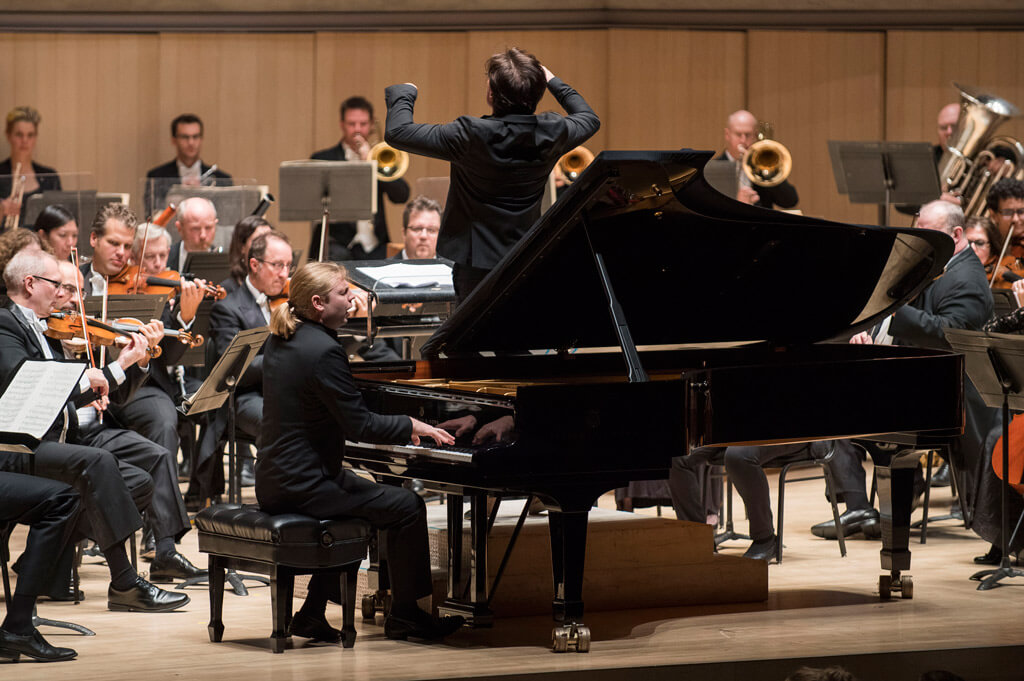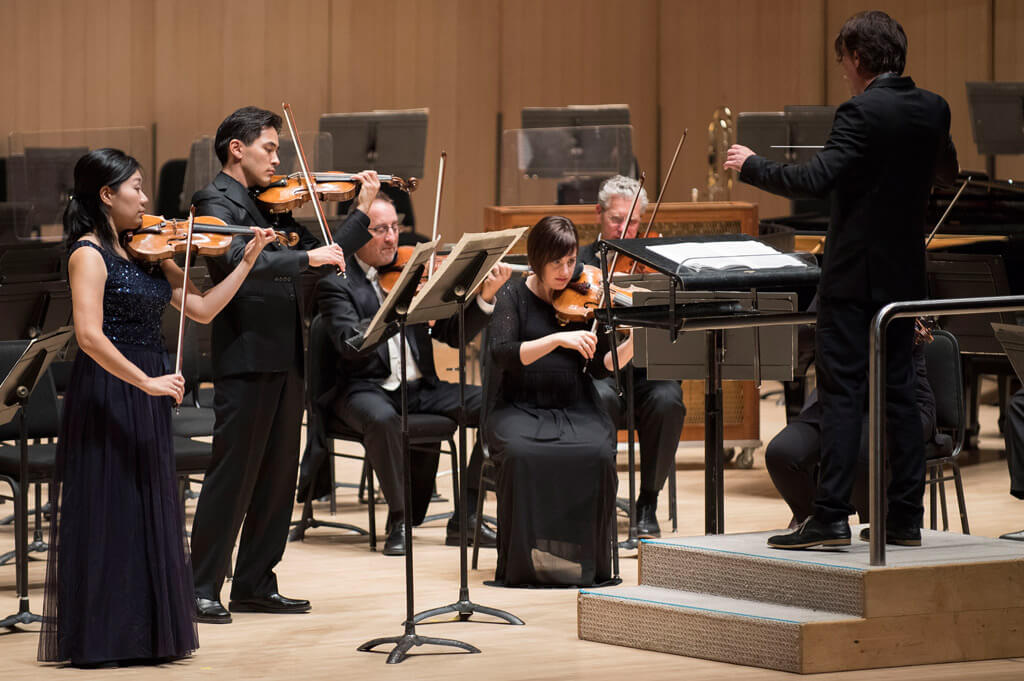
Probably not. This is as definite as I can be after the Toronto Symphony Orchestra debut on Wednesday of Kristjan Järvi, who was not given a decent symphony (or equivalent) as a showcase for his abilities. Maybe this Estonian-American conductor is on the list of possible successors to Peter Oundjian as music director. Probably not.
Järvi satisfies many of the criteria that should not matter but do. He has movie-star looks. At 44 he is stationed conveniently midway in age between the subscribers, the TSO people would like to attract and those they need to keep.
He has a pedigree: Neeme Järvi is his father, and Paavo Järvi is his older brother. He is handy with the microphone. As founder of the Absolute Ensemble (described in his biography as a “New York-based classical-hip-hop-jazz group”) and the conductor of the soundtrack to The Hunger Games, he has all the fashionable anti-traditionalist credentials you could hope for.
Can he pull together a symphony? Have to get back to you on that one.
There was no doubt that Järvi could elicit the requisite colour and energy from Zoltán Kodály’s Háry János Suite. This sequence of character pieces is virtually a concerto for orchestra, and getting the players (including extras on the saxophone and cimbalom) to give it their extrovert best is half the battle won. At points, I wondered whether the extravagant podium movements (including the occasional two-foot liftoff) were strictly necessary, but they undoubtedly helped in securing audience approval.
I was more troubled by Järvi’s showboating in Rachmaninoff’s Piano Concerto No. 4, a score that needs care and balance to restore its rightful place in the repertoire. Here it sounded disorganized; the phrases faintly characterized despite (or because of) all the circle-drawing and hip-swinging from the podium. Denis Kozhukhin, a Russian also making his TSO debut, pounded out the rising chordal theme mechanically. Nor did he find many depths in the Largo.
Possibly this pony-tailed winner of the 2010 Queen Elisabeth Competition was not in a competitive mood. He was buried by the orchestra through much of Gershwin’s Rhapsody in Blue in Ferde Grofé’s 1942 orchestration. Thank heaven for those cadenzas. Not that the TSO gave no pleasure: The sardonic muted trumpet and trombone each got a laugh, and rightly so.

The concert began with Steve Reich’s Duet for Two Violins and Strings of 1994, a harmless piece that pits canons in the solo parts (as played by TSO musicians Eri Kosaka and Shane Kim) against the usual mix of methodical chugging and long tones from the lower strings. In the program note, we read that the New York Times “recently” placed Reich “among the great composers of the century.” Since this phrase is pulled from a Richard Taruskin article of 1997 (where it is linked to an assessment of the 1988 composition Different Trains), I think its billing as some kind of recent editorial endorsement, à la Hillary Clinton, is rather misleading.
There was questionable annotation also from Järvi himself, who told the audience (accurately) that Rachmaninoff was in the audience at Aeolian Hall in New York for the 1924 premiere of the Gershwin. We cannot know for sure where Järvi got the idea that the Russian composer, very much his own man, wrote the Fourth Concerto in response to Rhapsody in Blue, but I see that this daft notion is promulgated in the long-winded Wikipedia entry on the work. Buyer beware.
Kodály ended the program, which was classified, with little justification, as part of the “Decades Project.” Asking for, and getting, more applause from the Roy Thomson Hall regulars, Järvi presented the planned-in-advance encore: the fourth movement from the Hungarian Dance Suite Op. 18 of Leó Weiner (1885-1960), a Hungarian educator and contemporary of Kodály (1882-1968). Brilliant and blazing, it was a testament to the virtuosity of the orchestra, which can hardly have been familiar with the piece.
People left happy. “He has so much personality,” I heard one woman of late middle age say as she filed out of the hall.
Hmm. Probably not. Maybe.
#LUDWIGVAN
Want more updates on Toronto-centric classical music news and review before anyone else finds out? Follow us on Facebook or Twitter for all the latest.
- SCRUTINY | Moussa Concerto Sounds Strong In Toronto Symphony Orchestra Premiere, Paired With Playful Don Quixote - April 4, 2024
- SCRUTINY | Esprit Orchestra At Koerner Hall: Ligeti 2, Richter No Score - April 1, 2024
- SCRUTINY | Sibelius & New Cello Concerto By Detlev Glanert Offers A Mixed Bag From The TSO - March 28, 2024



